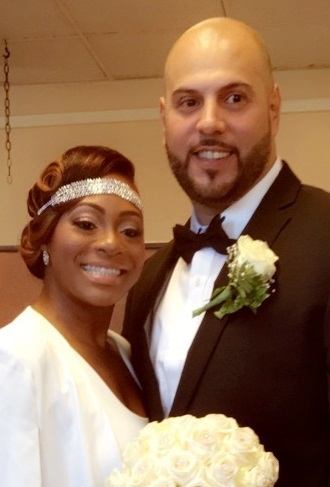Ivete Sangalo

Sangalo in 2013, photo by s_bukley/bigstockphoto.com
Birth Name: Ivete Maria Dias de Sangalo
Place of Birth: Juazeiro, Bahia, Brazil
Date of Birth: May 27, 1972/1973
Ethnicity: Brazilian [Portuguese, Spanish, remote African and Indigenous]
Ivete Sangalo is a Brazilian singer, songwriter, television host, and actress. She is nicknamed “Queen of Brazil,” “Veveta,” and “President of Bahia.”
Ivete is the daughter of Maria Ivete Dias da Silva and Alsus Almeida de Sangalo. Her paternal grandfather was Spanish, and most of her ancestry is Portuguese. She is married to Daniel Cady, with whom she has three children. Her paternal grandparents are pictured here.
A DNA test whose results were displayed on the Brazilian show Fantástico in August 2006 stated that Ivete’s genetic ancestry is:
*99.2% European
*0.4% Native Brazilian (Amerindian)
*0.4% Black African
Ivete’s paternal grandfather was Jesús Sangalo Ledesma (who likely was the son of Ricardo de Sangalo/San Galo and María Antonia Ledesma). Jesús was Spanish, and likely was from Ciudad Rodrigo, province of Salamanca, Castile and Leon.
Ivete’s paternal grandmother was named Alzira de Almeida. Alzira was born in Bahia.
Ivete’s maternal grandfather was Antonio Dias da Silva (the son of João Gomes da Silva and Piauilina Dias). Antonio was born in Bahia. João was born in Bahia, the son of Félix José da Silva and Roberta Maria da Rocha Gomes.
Ivete’s maternal grandmother was Maria de Souza da Silva (the daughter of Auto/Aucto Dias da Silva and Maria Mônica de Souza). Ivete’s grandmother Maria was born in Bahia. Auto was the son of José Dias da Silva and Tereza. Ivete’s great-grandmother Maria was the daughter of Salustiano de Souza and Vitalina.
Sources: www.elcorreogallego.es (in Spanish)
http://g1.globo.com (in Portuguese)
Baptism record of Ivete’s mother – https://www.familysearch.org
Birth record of Ivete’s maternal grandmother, Maria de Souza da Silva – https://www.familysearch.org

her sister looks black
https://encrypted-tbn0.gstatic.com/images?q=tbn:ANd9GcSwX8nvT-JeL9r30IKinezXPIxtLg-ecbojnw&usqp=CAU
I think it must have more than 0.04%, this percentage is quite ridiculous